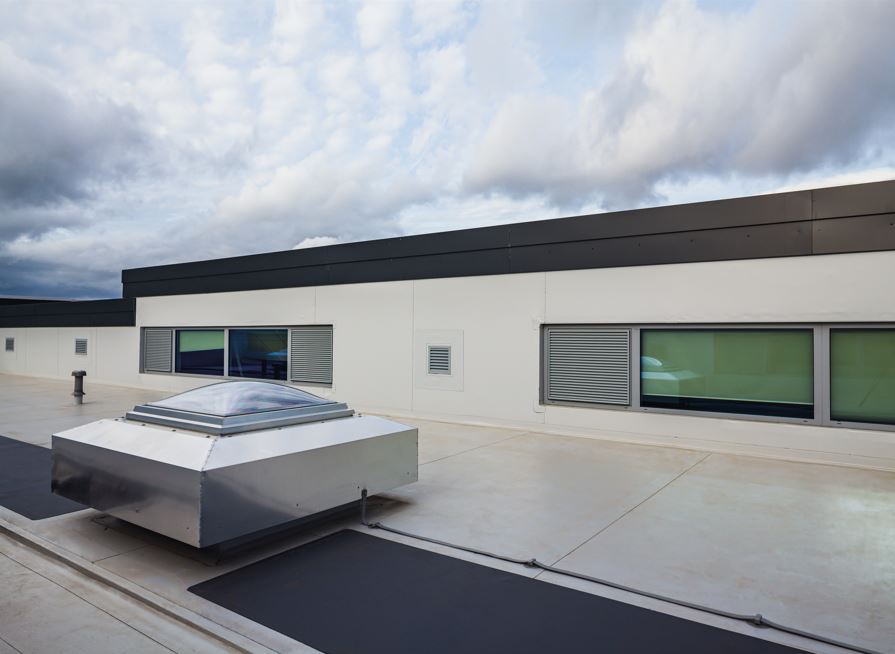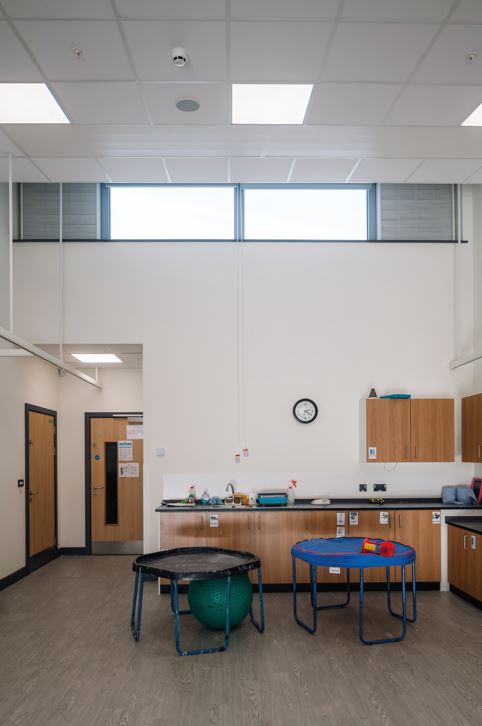
Ventilation is a crucial part of creating a comfortable learning environment but where do specifiers start? Huw Poppy, business operations manager at Passivent, offers some thoughts
Any conversations around ventilation in schools must be informed by the requirements of Building Bulletin 101 “Guidelines on ventilation, thermal comfort and indoor air quality in schools” and Building Bulletin 93 “Acoustic design of schools – performance standards” as well as the new stricter targets on ventilation set out in Building Regulations, Part F. The chosen ventilation strategy should also contribute to a reduction in both carbon emissions and operational costs over the whole life of the building. In accordance with BB101, ventilation in schools needs to be such that it achieves a daily average concentration of carbon dioxide of less than 1000ppm during the occupied period and should not exceed 1500 ppm for more than 20 consecutive minutes each day at full capacity. It’s also important that the building maintains an even temperature throughout the year with summertime thermal performance considered to prevent overheating.
There are various ventilation strategies which can be effectively used within educational settings, and understanding the fundamental principles of these will help specifiers select the most appropriate solution. Cross-ventilation uses controllable high-capacity inlets/outlets on two opposing building facades. It is suitable for spaces with a depth of up to five times the floor to ceiling height, while single-sided ventilation, where the air is brought in and extracted through the same façade, can be used in spaces with a depth of up to 2.5 times the floor to ceiling height. Passive stack ventilation uses a combination of cross ventilation, buoyancy (warm air rising) and the venturi effect (wind passing over the roof terminals causing suction). Displacement ventilation uses wind driven roof mounted terminals with separated chambers to channel air down into the building regardless of wind direction. This strategy is suited to taller spaces such as large atriums, sports and dining halls rather than classroom areas. Of course, this is just an overview of a complex issue and is exactly why early engagement and close collaboration with ventilation specialists can be so beneficial. Natural ventilation is the preferred choice over mechanical ventilation systems for educational settings for many reasons. By ventilating an internal space without the requirement of fans, natural ventilation offers a low energy system, reduced maintenance requirements and importantly, less noise pollution. This is a major consideration for all schools but particularly those with a high intake of SEND pupils.
It relies on natural forces including external-to-internal temperature difference, wind pressure and buoyancy – essentially the force that makes warm air rise. However, for natural ventilation to work effectively, it must be ‘designed in’ from the start to allow for cross flow of air, stacks and general planning of air paths and circulation throughout the building. By reducing reliance on fans to ventilate a space, natural ventilation systems consume less energy and with stricter environmental targets and rising fuel costs, this is a major benefit. Such systems can also help maintain a comfortable indoor temperature which is fully compliant with BB101 by tempering the incoming air. During summer months, night-time purging can be enabled to cool the building down, avoiding overheating the next day. And where there are high internal heat gains, natural ventilation can be used in conjunction with air conditioning where the system will work passively for as much of the year as possible and the cooling system will only be used when needed.
